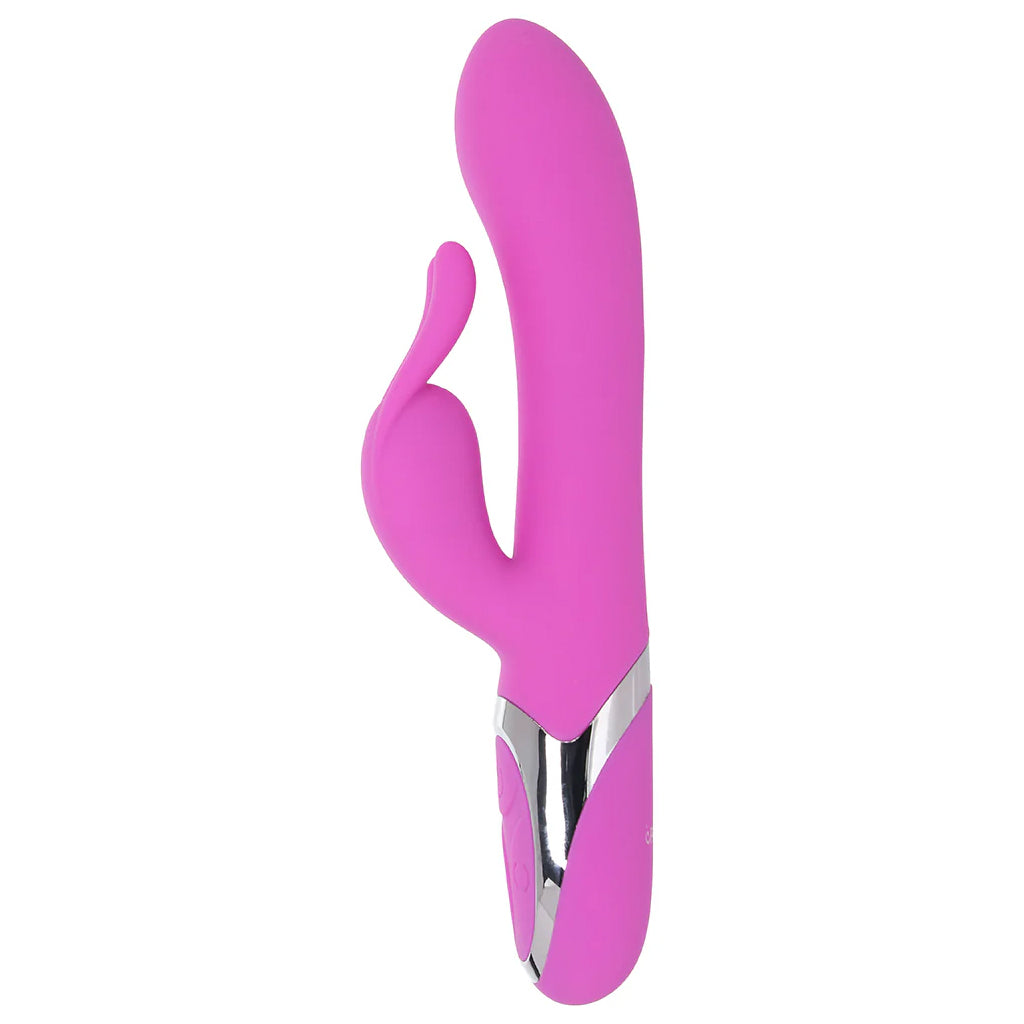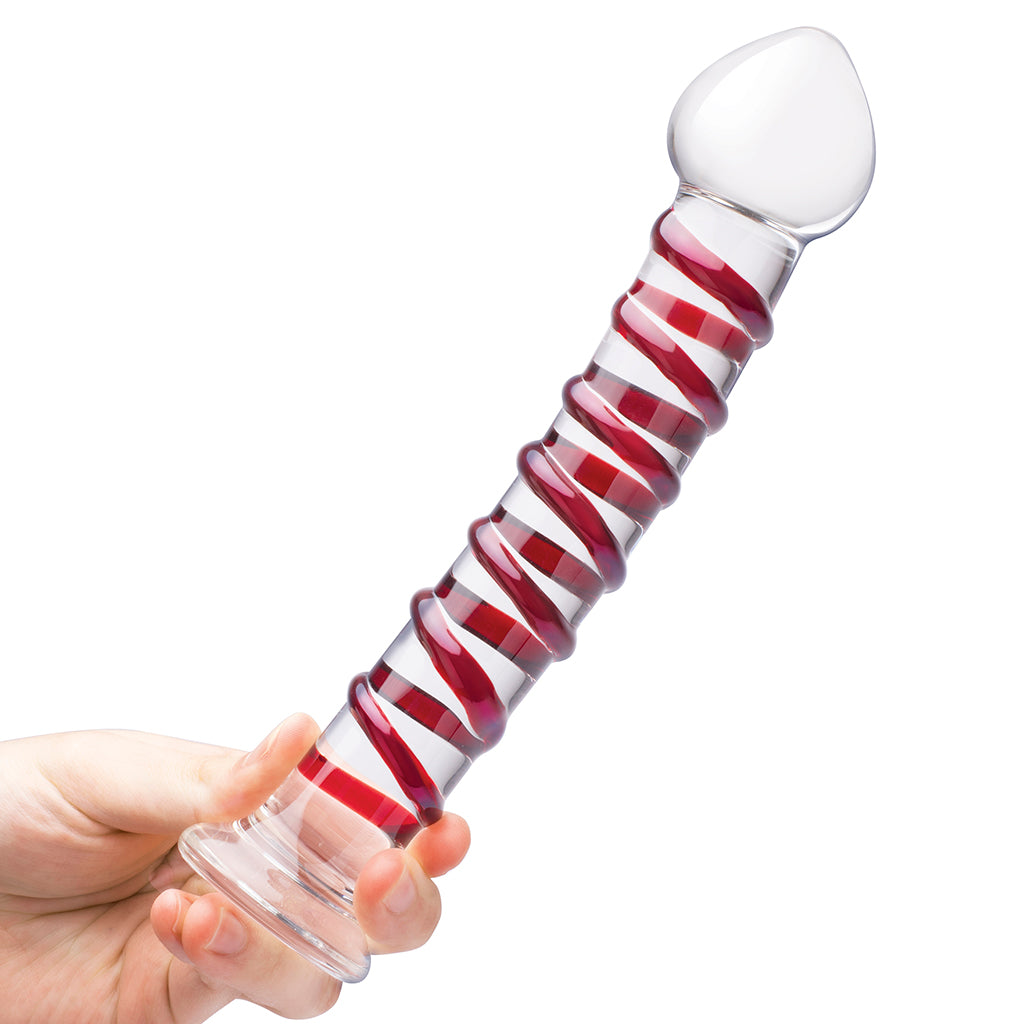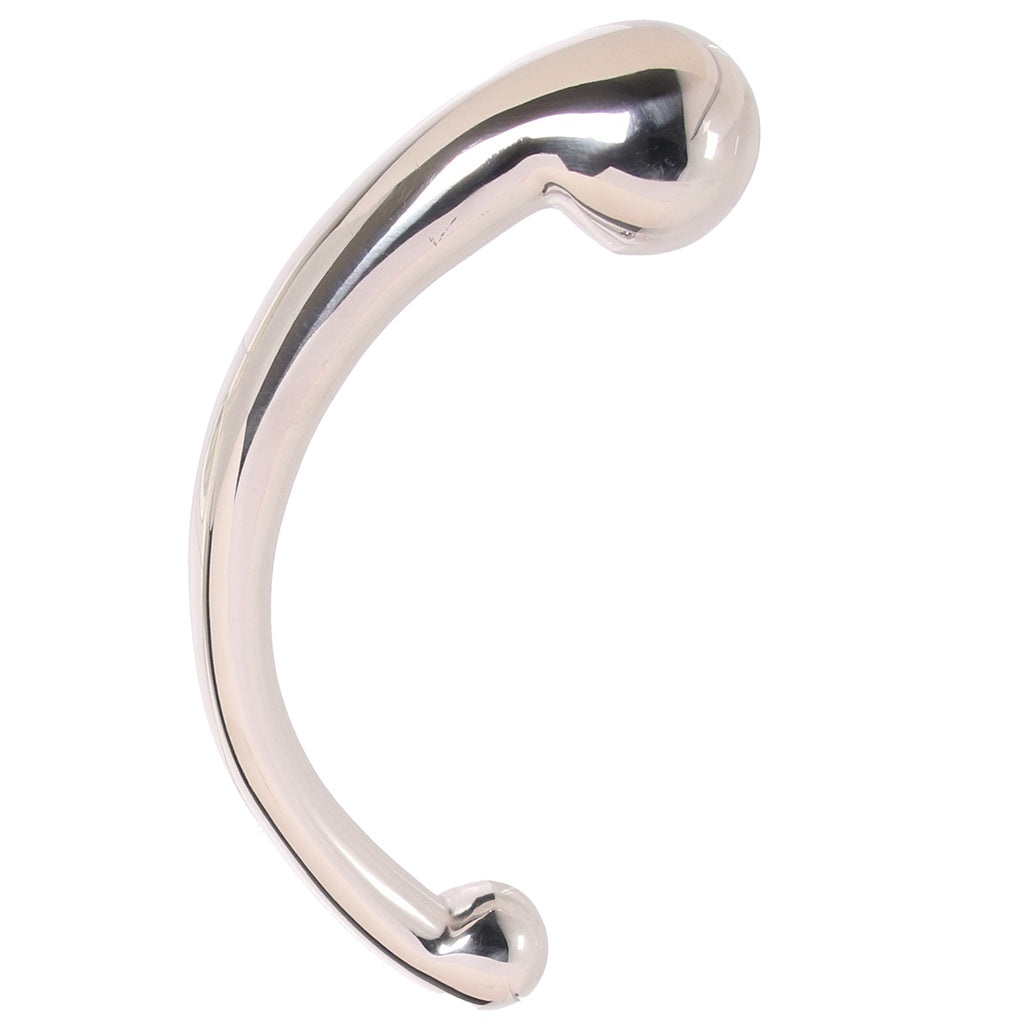
If you thought that there was any way on earth that we could NOT make a Madonna reference in that title, you were incorrect! We do apologize (only half heartedly, because it’s a great song) if Material Girl is stuck in your head right now, though. In today’s edition of the PinkCherry Blog, we’re not talking about being a bit of a gold digger à la the Queen of Pop, but we are talking about your sex toys, and more specifically, what they’re made of.
We know that this may not be the most exciting blog we’ve written (or will write), but here’s why you should be paying attention. First, a sex toy is going to be getting very close to you and/or a partner. If it’s not heading directly into you, it’s going to be touching your skin, at the very least. Like the food you eat or the moisturizer you use, it’s important to know what’s going on, in, and around your body. Second, it’s a little-known fact, but the Canadian adult toy industry isn’t officially regulated. Sex toys fall under the blanket term of ‘novelty device’, which means that there is no government (or otherwise) agency overseeing quality control or safety. Having said that, please don’t panic and toss out your beloved vibrator collection! Self-regulation within the industry is incredibly strict, and shoddy manufacturing, unsafe design and shady business practices will get a company blacklisted faster than you can say ‘lawsuit!’
Know that reputable retailers (like us) will always provide lots of information to go along with any sex toy being sold. We want you to be happy with your toy(s), after all! Materials should be clearly listed; as should care and cleaning tips and any known safety warnings. If you have a question and can’t find the answer in the item description, please don’t hesitate to email or call. If we can’t satisfy your curiosity, we’ll play detective until we do!
Okay, that little lecture is out of the way, so let’s take a look at some of the most common sex toy materials.
Silicone
We’re covering silicone first because, honestly, it’s kind of the best! Silicone is a silky, odor and taste free material that’s extremely body safe, extra durable and very hygienic. Those last three points come courtesy of silicone’s non-porous nature. Who cares about a sex toy’s pores, you ask? You should. Porosity, in toy material terms, refers to your vibrator, dildo, butt plug or masturbator’s surface. Pores are literally tiny holes or openings that can collect dirt, bacteria, old lube, bodily fluids etc. Ick. In most cases, a good thorough cleaning will get rid of most of that nastiness, but with a silicone toy, you won’t need to worry about what might be lurking beneath your bunny’s surface. Don’t get us wrong, you still definitely need to clean a silicone toy, and clean it well! It’s just easier to do. Silicone toys should be washed under hot water with a good antibacterial soap, or you can use a high quality toy care fluid/foam (follow manufacturer instructions with sprays and foams, please). If your silicone toy doesn’t vibrate or have any mechanical parts, you can run it through the dishwasher, boil it or wipe down with a mild bleach solution. Since they can be so thoroughly cleaned, silicone toys are generally okay to share with a (sexually responsible and honest) partner, but we always recommend using a condom, just to be on the safe side.
We’re going to get a little science-y to explain why silicone is hypoallergenic and body safe, so bear with us! Silicone is an inert substance, meaning that is doesn’t react with other chemicals, including any natural chemicals that are in your body or on your skin. Weirdly, it will react with itself, so if you happen to be made of silicone, please avoid using silicone toys! Seriously though, when silicone comes into contact with more silicone, it tends to melt. On that note, you’ll need to use only a water-based lubricant with your silicone toy, never a silicone lube. Some silicone lubricants and hybrids (water + silicone) claim to be safe for use with silicone toys, but we say better safe than sorry.
Another of silicone’s desirable traits is its sensitivity to temperature. A silicone toy can be easily warmed or cooled – just soak it in hot or cold water for a few minutes (if it’s waterproof, that is!)
Pros:
- Hygienic
- Hypoallergenic
- Can be boiled/bleached (if non-vibrating)
- Non-porous
- Temperature receptive
- Odorless
- Tasteless
Cons:
- Compatible with water-based lubricants only
- Must be stored away from other silicone toys/products
* Some toys claim to be silicone or ‘silicon’, when they’re in fact, a blend of silicone and something else, usually TPE or TPR, which we’ll get to. We always state if this is the case.
Glass
Just as body safe, non-porous and hypoallergenic as silicone, glass sex toys (also known as borosilicate or pyrex) simply aren’t soft. Because they’re so firm, glass dildos, plugs and vibes are perfect for more intense massage, g-spot seeking and p-spot play.
You can safely (carefully) boil and bleach glass toys if they don’t vibrate/contain mechanical parts, and they’re even more receptive to temperature than their silicone buddies.
One benefit glass has over silicone concerns lube. You can use any lubricant you like with a glass dildo, plug or vibe - though we don’t ever recommend using an oil-based lube internally.
It’s very rare for a glass toy to break or crack, but it can happen. Please check your glass toy’s surface before inserting it anywhere, and always store carefully.
Pros:
- Hygienic
- Hypoallergenic
- Can be boiled/bleached (if non-vibrating)
- Non-porous
- Temperature receptive
- Can be used with any lubricant
- Odorless
- Tasteless
Cons:
- May be too firm for some
- Must be stored carefully
Steel/Aluminum
Following in the body-safe footsteps of glass and silicone, unpainted steel and aluminum toys are non-porous, easy to clean and generally safe for all skin types. Look for ‘stainless steel’ in the item specifications for top-notch peace of mind.
Steel and aluminum toys are, like glass, extra firm, temperature-sensitive (can be heated or cooled) and great for g-spot and prostate play. They’re safe for use with all lubricant types, and can be boiled/bleached for a more thorough clean.
Be on the lookout for cheaper metal toys that have been painted or coated in some other material. Plain-jane is definitely better when it comes to metal toys!
*A note: some metal toys may contain nickel, which can cause an allergic reaction in some. To be safe, look for a toy that specifies ‘nickel free’
Pros:
- Hygienic
- Hypoallergenic
- Can be boiled/bleached (if non-vibrating)
- Non-porous
- Temperature receptive
- Very durable
- Can be used with any lubricant
- Generally odorless and tasteless
Cons:
- Very firm and unyielding
- Can be weighty
- Must be stored carefully
ABS Plastic/Acrylic
The last of our firm toy materials, ABS plastic and acrylic are up next. Hard plastic toys have a nice smooth surface that tends to resist bacteria, dirt and otherwise. They can still be a little porous though, so unless you’ve cleaned your plastic toy down to the sub-atomic level, you should probably not share it.
Low maintenance, easy to clean and safe to use with all lubricant types, plastic is a common material of many bullet vibes. It’s also used quite a bit as an accent material (handles, trim etc) for silicone and TPR/TPE toys.
Pros:
- Usually very smooth
- Easy to clean
- Transmits vibration well
- Compatible with all lubricants
Cons:
- Inflexible
- Can be slightly porous
Thermoplastic Rubber (TPR) & Thermoplastic Elastomer (TPE)
TPR and TPE are softer toy materials that can range from mildly flexible to extra squishy in texture.
There was a bit of a panic over soft toy materials in general not so long ago thanks to (cue horror movie music!) the dreaded phthalate. Phthalates are chemical softeners used to manipulate the texture of certain rubbers and plastics. They’re considered unsafe and probably toxic. Remember that science lesson we gave earlier about the inert nature of silicone? Well, toy materials containing phthalates are basically the opposite of inert. The chemicals can react with skin and worse, can ‘leech’ or bleed out from a toy’s surface. Not a great selling point, right? Luckily, it’s usually pretty easy to tell if a toy contains phthalates. If it smells extra rubbery or feels slimy, you’re probably in the presence of phthalates.
That being said, most TPR and TPE sex toys are phthalate free. A good toy manufacturer will avoid phthalates like the plague, and responsible retailers will keep you posted. We ALWAYS state a toy’s phthalate-status. If you don’t see the words ‘phthalate-free’ in a soft toy’s item description, it means that we aren’t sure, and won’t tell you otherwise.
Even though they’re usually free from phthalates, TPR and TPE are porous materials. This means that they can’t be reliably cleaned and shouldn’t be shared. In other words, keep ‘em to yourself!
TPR and TPE can be used with water or silicone based lubes (we always recommend a water-based lubricant, though) and should be cleaned well before and after use with warm soapy water or a favorite toy care fluid/foam.
When it comes to storage, you’re going to want to keep your TPR/TPE toy separate from other soft toy materials. It’s possible that prolonged contact could cause melting or other damage. Let’s avoid that, shall we?
Pros:
- Soft and pliable
- Can be molded into just about any shape
- Lifelike look and feel
- Usually phthalate and latex free
Cons:
- May have a slightly rubbery smell
- Porous
- Should not be shared
- Must be stored away from other soft toy materials
PVC/Rubber
We covered phthalates above, so we won’t get into them again. Basically, unless a PVC or rubber toy specifically states otherwise, you can probably assume that there are phthalates present.
If you do decide to go with a PVC or rubber toy, it’s always a good idea to use a condom overtop of the toy, or overtop of yourself.
PVC and rubber toys can be cleaned using the standard method: warm soapy water or a toy care fluid/foam, but please keep in mind that these toys are quite porous and can’t be fully cleaned. Don’t share them, in other words!
Pros:
- Soft and pliable
- Easily molded
- Can be used with water or silicone based lubes
Cons:
- May have a rubbery smell
- May contain phthalates
- Porous
- Should not be shared
- Must be stored away from other soft toy materials
Realistics
Cyberskin, ULTRASKYN, UR3, LoveSkin – all examples of realistic sex toy materials. Created to look and feel as close to skin as possible, they’re used to make many masturbators. Most are made with a manufacturer’s signature (read: secret!) blend of various materials, but they generally contain TPR, TPE, silicone, possibly latex and sometimes PVC. Some realistic materials are phthalate free (again, we’ll tell you), but all are porous. Very Porous.
Realistic toys should definitely not be shared, and they need to be cleaned very carefully. Use lots of warm soapy water and a good antibacterial soap or coat fully with toy cleaner and leave it to marinate for a while. You’ll need to let your realistic toy dry completely and totally before storage.
Water-based lubricants are your best best with any realistic toy. Some are safe to use with silicone lubes, but we’d recommend sticking with water!
Pros:
- Soft and pliable
- Easily molded
- Lifelike look and feel
- Temperature receptive
Cons:
- May have a rubbery smell
- May contain phthalates
- Porous
- Shouldn’t be shared
- Must be stored away from other soft toy materials
Latex
Latex isn’t a very popular adult toy material anymore, although it definitely had its day! Latex is nice and soft, and can be easily shaped and molded, but for the most part, it’s not a great choice. Latex is porous, smells a little weird, and isn’t very durable. It’s also a fairly common allergen and can cause a reaction in people who are sensitive to it. If you do end up choosing a toy made from or containing latex (we’ll specify), please don’t share it, and consider using a condom overtop.
Latex is compatible with water and silicone based lubricants. Wash your latex toy well using warm soapy water or use a toy care fluid/foam.
Pros:
- Very soft
- Inexpensive
Cons:
- Strong smell/taste
- Not very durable
- Can cause allergic reaction
Okay, now that we’ve got you all freaked out about phthalates (seriously, don’t be - just pay attention to what’s in your sex toys) and let you know that we have a serious crush on silicone, we’re going to leave you with a (modified!) quote from the Material Girl. “Toys may come and toys may go and that’s all right you see. I’m just glad I know what they’re made of, thank you PinkCherry!”











